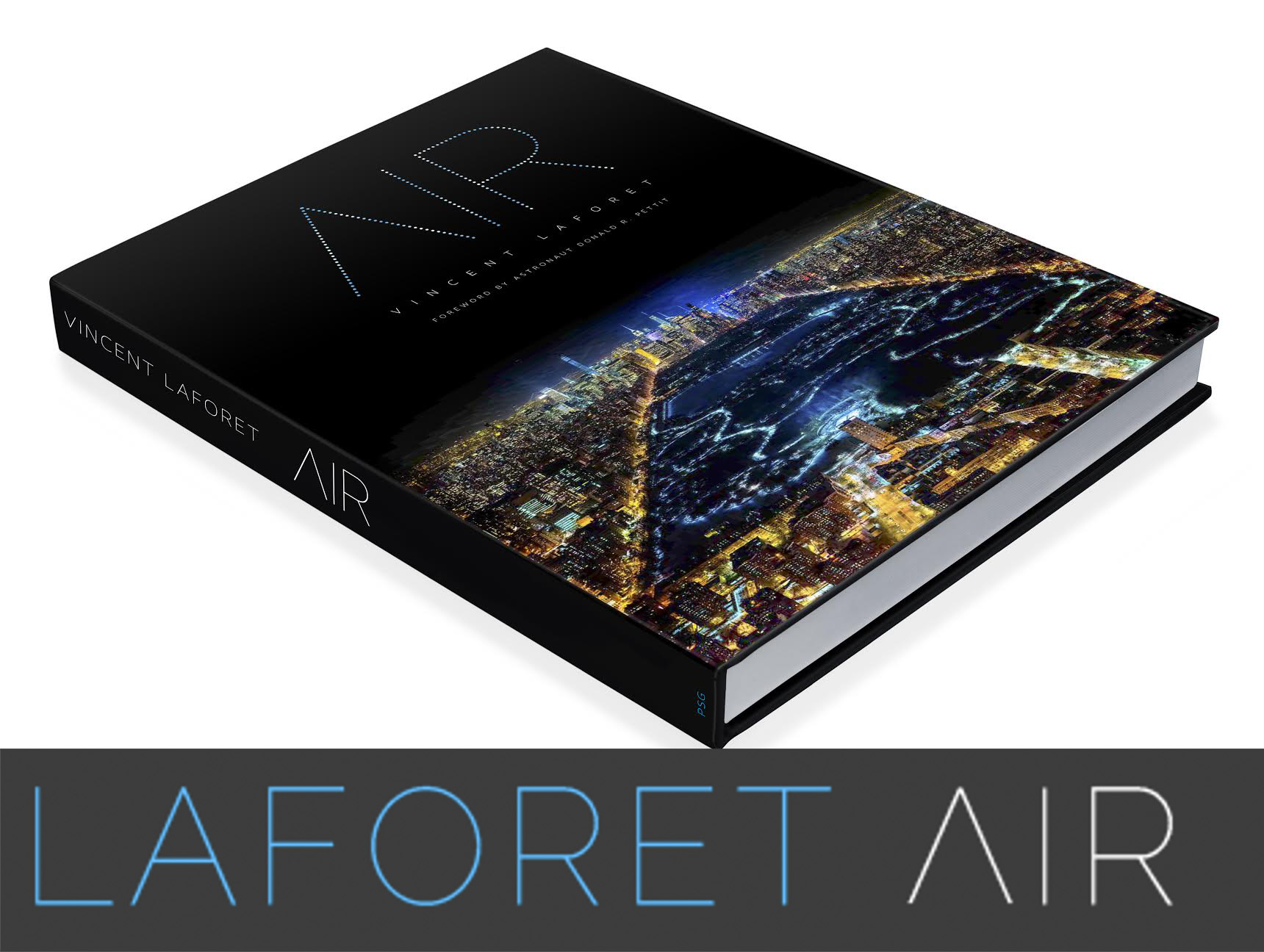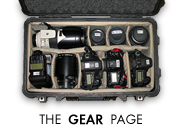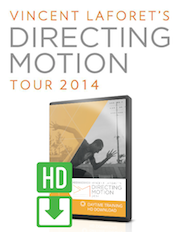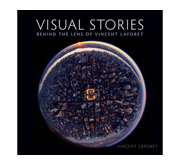Oh Dear… The Viking has landed… and, uh, the Astronaut!
This sounded like such a good idea at first… but now even Gizmodo has picked up on this series of videos! A few weeks ago Blake at Vimeo asked me to help him record some instructional videos on lenses and apertures and depth of field etc. I told him that it’d been done SOOOO many times before… I didn’t want to do anything too booorrriiinnnggg… we had to do something DIFFERENT… and then out of that, these 3 videos resulted – check them out below or on the Vimeo page:
Behind the Glass: An Introduction to Lenses from Vimeo Staff on Vimeo.
Here’s a excerpt from the Vimeo page followed by the two other videos after the jump…
"Aperture:
The aperture is the diameter of the lens opening. The larger the diameter of the aperture, the more light reaches the film or image sensor. The aperture also performs a critical function for focus. As the aperture decreases in size, the background and foreground gain sharpness. This zone of sharpness is called the depth of field.
Aperture is expressed as F-stop and will be indicated on your camera in abbreviations that look like this: F2.8 or f/2.8.
The "F" stands for the focal length of your lens, and the number indicates the diameter of the iris opening. (For a more in-depth explanation, head over to this lesson!)
Focus Ring
Located around the barrel of your lens, this helps you focus the image. Some lenses will also have an auto focus switch, which means that your lens can do the focusing for you on those days that your eyes are feeling a little tired.
Prime or Fixed Lens vs Zoom Lens
A prime lens has a fixed focal length, whereas a zoom lens has a handy ring that allows you to switch to different lens equivalents within the single lens. But don’t knock prime lenses entirely! They may be less versatile than a zoom, but they often have superior optical quality, are lighter weight, smaller bulk and cheaper.
Pro tip…
No matter what kind of lens you’re using, always try to zoom by foot (aka- walk yourself closer) to get near to the subject. This will always provide superior quality as opposed to trying to zoom in with the lens.
A Lens for Every Occasion!
Various lenses are suited for specific applications. Lets have a look at some common lenses and what they do.
16mm– An ultra wide lens, this bad boy distorts heavily, emphasizing objects in the foreground by making them look a lot larger than the background. Dynamic, but use with caution!
28mm– Standard for documentary and photojournalism to shoot cowboy shots, otherwise known as medium shots.
35mm– Another standard for documentary filming, also tight enough to shoot portraits.
50mm– Standard for cinema/video, it approximates the human eye’s typical focal length.
85mm– A popular portrait, or "beauty" lens. Capable of making everyone look lovely!
200mm– The top of the scale for most people, this is a telephoto lens. Their inherent shallow depth of field makes them useful in eliminating unwanted foreground and background objects by simply throwing them out of focus. Great for sports photography!
Now that we’ve had a friendly overview, let’s take a closer look at the wonders of focal length and what that means for your video. Onward to Episode 2!" Click below to see more videos…
Behind the Glass Part 2: Focal Length from Vimeo Video School on Vimeo.
Focal length is an important aspect to keep in mind when you’re deciding which lens to use to shoot your video. Different focal lengths will affect how your subjects appear in the shot and can even sway a viewer’s opinion of your subjects. Watch the video to see how!
When you use different lenses, you’ll notice that even if you don’t move the camera, the subjects in that image get larger or smaller. The longer the lens, the more compressed your image gets meaning things in the background will appear much larger than if you were using a wide-angle lens.
- Wide angle lens – 16mm emphasizes the foreground and de-emphasizes the background. Be careful of image distortion while using this lens.
- Standard lens – 50mm shows the foreground and background subjects as just about the same sizes.
- Telephoto lens – 200mm has very little depth of field and highly compresses your image.
Shooting a dialoge scen can be tricky if you don’t know which lens to use. To get a natural feel in your dialoge scenes, it’s best to stick to mid-range lenses that don’t distort or compress your subjects too much.
- A 11mm lens is very wide and will distort the edges of your shot. Parts of your subjects will appear exaggerated and might look cartoony.
- A 200mm lens will make your subjects appear very close isolate them in the shot.
- A 50mm lens shows gives your subjects room so they can be easily placed in their scene. A 50 mm lens also won’t distort your subjects, so they’ll stay natural looking.
Pro tip…
If you want to make someone look really good, use a longer focal length. The longer the lens, the more subtle someone’s facial features become and that makes for a flattering portrait.
In conclusion, not every lens is equal, but each of them can help you tell a story visually if you know how to use them. Still hungering for more lens know-how? In the final episode, Vincent and Blake teach you all about depth of field. Check it out now!
Behind the Glass: Depth of Field from Vimeo Staff on Vimeo.
F-stop
Describes the size of the aperture opening. The lower the f-stop number, the bigger the aperture and the more light is able to reach the image sensor.
A low f-stop (large aperture) results in a shallow DOF. A high f-stop (smaller aperture) gives a deep DOF. To dive into this further, take a look at our lesson on f-stop and aperture here.
Shallow vs. Deep
Shallow depth of field means that a subject is in focus but objects in front and behind it appear out of focus. Less DOF is often desired when shooting portrait, close-up and macro shots.
Deep depth of field means that all or most of the picture is in focus from front to back. It is often used for capturing subjects in the distance. This is also preferable for documentary work, as you don’t know how the subject will move and it is easier to pull focus.
Now Get Playful!
We’ve given you a handy overview of the different lenses available, a breakdown of what focal length is, and finally, a peek into the wonders of DOF. Now we implore you to experiment with this newfound brain food. Utilize the functions of your lens for increased dramatic effect and to better tell your story! Remember kids: your lens is your friend.













Vincent, that was kinda fun. The slow motion treatment on some of those clips with all the effects was pretty cool.
Great and funny 🙂
thank you,.great knowledge for newbie like me..
Thanks for the videos… definitely entertaining! 🙂 Fun stuff.
This is so helpful and I’m loving the costumes 🙂
Hey Vincent,
Wouldn’t it be interesting to break down a good short movie, and explain how the focal length and depth of field bring a whole new tone to the visual language?
I think every one understand that 24mm is larger than 85mm. If they don’t as you said, there’s plenty to learn from on Vimeo.
By contrast, people usually underestimate how much it brings to the visual language and thus to story telling, even though filmmaking is ALL about it.
Cheers,
p
Vincent Laforet Reply:
August 16th, 2011 at 5:18 pm
I’ve thought of that and might definitely do that some day! The issue is w/ rights – you’d need to get clearance from every actor etc… v
Crazy Guys! Great tutorials and I stayed through all 3 videos. Loved it.
That was More Fun than most informational videos I have seen.. Good Work!!
What a great story about a viking and an astronaut!
Hello Vincent,
I have two questions the first being were all these examples shot on a full frame or an APS-C sensor. While on the subject of crop factor. I know an APS-C sensor crops to 1.6x making a 50mm a 85mm. However my question lies in your example about what about compression. Does the sensor crop change the compression. For example is if i were to shoot a subject with a 7D with a 85mm 1.2 and a 5D with a 50mm 1.2 will these images look exactly the same or is one going to have more compression than the other?
Vincent Laforet Reply:
August 17th, 2011 at 10:07 am
That’s one of the inherent problems w/ small sensors- the compression DOES NOT CHANGE – therefore expect more depth of field and LESS compression with a smaller chip because you have to use a wider lens to achieve the same field of view (the same framing) than you would with a full frame chip. Make sense?
Great educational videos for beginners!
Vincent as a Viking is freekin Hilarious!! especially when he goes “Ah Ah Aaaaaahhhhh!”.
How did you shoot those wicked slow-mos? Was that software or hardware or both? Thanks! Nice informative videos!
Vincent Laforet Reply:
August 19th, 2011 at 2:01 am
Both – I think they shot w/ the 7D for those if I remember. Software (has clear limitations) but it has gotten significantly better.
@Vincent Laforet, Yes this does make sense however you said the compression does not change. However does this mean that the compression will be different using my example above of trying to achieve the same framing on two different chips?
Vincent Laforet Reply:
August 19th, 2011 at 2:03 am
Yes – the compression of a 50mm lens stays the same regardless of what body you use it on. The smaller sensors simply “see” or “crop” a smaller portion of the frame – but none of the optical characteristics change at all. Therefore – when you use a 20mm on a 1.6X sensor to get the same field of view that you would get with 32mm on a full frame sensor – you get the same equivalent “field of view” or focal length equivalent – but you get the depth of field you’d expect from a 20mm, NOT a 32mm – or a lot more depth of field.. make sense?
@Cole, It could be beneficial to others to clear this up by editing your break down of focal lengths by adding what a cropped chip would do and work for on these focal lengths. Cause there are alto of people like me who can only afford a cropped sensor and 1 or 2 lenses.
Vincent Laforet Reply:
August 19th, 2011 at 2:00 am
We could do this – but truth is: it gets very very confusing when you teach/talk about it. It’s easier to ask people to do simple math on their own – 1.3X for 1D series, 1.6X for 7D, Rebel etc. Imagine listing all of those focal lengths, and giving 3 numbers for each depending on what body… it would get incredibly confusing. As long as you do the relatively simple math – all things equate.
@Cole, this is one reason I think that the 5D MkII has such a following – it’s not just the shallow DOF, there is also something ingrained into us from years of film vs. television, that makes the average viewer quite perceptive of the change in “perspective compression”, which your point illustrates perfectly.
What do you normally shoot with 200mm… Gangs, people you don’t want to get too close to. Amazing. Nice work.
One small correction. A cowboy close up, usually shortened to cowboy, is a shot that shows the cowboy’s guns/holsters. Therefore a cowboy shot cuts between the knee and the hip, not at the waist.
The name comes from old cowboy movies, where there were many shots of cowboys/gun fighters that showed from the bottom of their holsters to the top of their hat.
There are loots of funny/interesting names for shots. The Two-Tee fore instance covers from top of head to bottom of rib cage.
Vincent Laforet Reply:
August 21st, 2011 at 11:16 pm
You confirm a point I make often – these things mean different things to many people. Even in the industry. a CU for someone isn’t the same for everyone. That’s why I walk up the the subjects (when possible) and visually show the crew what I mean by the top of the frame and bottom so that there is no misunderstanding. Another option is to use a director’s viewfinder so that all key people are in the know of what will and won’t be seen.
Vincent I kind of knew a lot of stuff but this is definitely insightful.
Only problem I have when shooting at f16 I lose way too much light, so with 5Dm2 its very stressful to shot fast moving events, and I would never recommend this camera for any documentative work.
Great stuff.
Every time I see your Reviere I just want to stop filming paid commercial crap events and start making films.
its horrible I know!
i am fan! i could not help by inspire with your work sir, i am an multimedia design student in Singapore. and i really wanted to do things what i love to do. like what you are doing here.
Great information, thank you Vincent.
As for the other guy, I’m very confused. I understand the role/need of a host, but I don’t understand the behavior. I came and watched these videos to learn, not watch an imbecile take time out of my day.
Perhaps, if your audience are hobbyest or high schoolers (not being sarcastic) it would make sense, but I venture to say that most professionals are looking for information not entertainment; and from the look on Vincent’s face, i’d say he would agree. These three episodes were a mockery to my profession; all i wanted to do was punch my screen and walk away, but Vincent’s information was too great. Please pay attention to your audience and the platform when you produce these, loose all the non sense (including the waist of time cutaways and transitions and sfx (or pick appropriate ones)) and for the love of god remind your editor that even though you can’t see it, audio is still part of the edit.
Even though i was pissed off the whole time watching it, im glad it was there to watch and i look forward to seeing a lot more.